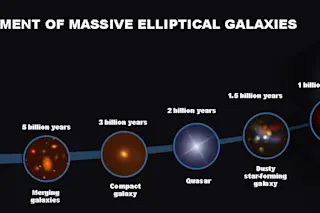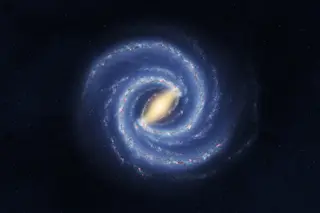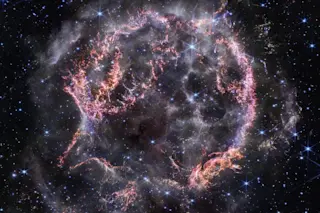This artist's concept illustrates the two types of spiral galaxies that populate our universe: those with plump middles, or central bulges (upper left), and those without them (foreground). | NASA/JPL-Caltech
If you’d never met a human, figuring out that babies and seniors are the same species might not be easy. Astronomers have to make such leaps all the time, matching snapshots of youthful galaxies with mature counterparts and filling in missing links.
Take the universe’s most massive galaxies — blobby, indistinct ellipticals. Until this year, no one understood how they got so gargantuan. But in January, astronomers used optical and infrared telescopes to look back nearly to the beginning of the universe, just 1.5 billion years after the Big Bang, where they saw newborn ellipticals — ancient galaxies so dusty they’re nearly invisible. In their early years, these galaxies formed stars a thousand times faster than the Milky Way does ...















